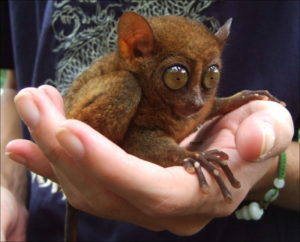Before we start packing up and move to the Philippines for our retirement, we need to know what lies ahead of us in terms of their natural resources.
We do not want to stay in a place devoid of nature, devoid of plants and animals. Let us check the Philippines for its diversity in nature.
The Philippines is rich in natural resources. It has fertile, arable lands, diverse flora and fauna, extensive coastlines, and rich mineral deposits. The Philippines’ primary source of livelihood is its fertile land, which are rich, wide plains suitable for farming. The Philippines also boasts of wide tracts of lush, green forests. In fact, almost half of the country’s total land area is forested.
The Philippines is one of the ten most biologically megadiverse countries and is at or near the top in terms of biodiversity per unit area. Around 1,100 land vertebrate species can be found in the Philippines including over 100 mammal species and 170 bird species not thought to exist elsewhere.
Philippine maritime waters encompass as much as 2.2 million square kilometers (850,000 square miles) producing unique and diverse marine life and are an important part of the Coral Triangle. There are 2,400 fish species and over 500 species of coral.
The Apo Reef is the country’s largest contiguous coral reef system and the second-largest in the world. Philippine waters also sustain the cultivation of pearls, crabs, and seaweeds.
The Philippines’ rainforests and its extensive coastlines make it home to a diverse range of birds, plants, animals, and sea creatures (providing some of the most spectacular sights you’ll ever see).
I will start with a video of some spectacular birds found in, but may not be endemic to, the Philippines.
Animals Endemic to the Philippines
Butanding Shark – is a slow-moving filter-feeding animal that is considered as the largest fish in the sea, measuring 40 feet or more. This distinctively yellow-marked shark can be found in the waters of Donsol, Sorsogon between the month of January and May.
The whale sharks prefer to live in tropical and warm-temperate oceans, and thought to inhabit almost close to the bottom of the sea (the open sea). These sharks are often found passing by and feeding at several coastal sites such as Donsol and Batangas in the Philippines.
Sinarapan fish – (Mistichthys luzonensis) is the world’s smallest commercially harvested fish located only in the Philippines. They are endemic to the Bicol Region, specifically in Lake Buhi, Lake Bato, Bicol River and other bodies of water in Camarines Sur province.
Sinarapan fish are a type of goby and they are transparent, except for the black eyes. The fish have an average length of 12.5 millimeters. Males are smaller than females.
Tarsier – The Philippine Tarsier (Tarsius syrichta or Carlito syrichta), known locally as the Maumag in Cebuano/Visayan and Mamag in Luzon, is an endangered species of tarsier endemic to the Philippines. It is found in the southeastern part of the archipelago, particularly in the islands of Bohol Island, Samar Island, Leyte Island and Mindanao.
Mouse deer – The Philippine Mouse-deer is a small, nocturnal ruminant, which is endemic to the southwest of the island of Palawan in the Philippines.
It has a black and brown coat with white stripes on the throat and chest. It has slender legs and an arched back that is covered by brown fur, with a white base. A dark line runs from each ear past the eye toward the nose.
The male of its species does not have any antlers like a true deer. They use their large, tusk-like canine teeth on the upper jaw for self-defense or territorial fights with other males.
Flying Lemur – An average Philippine Flying Lemur weighs about 1 to 1.7 kilograms and is 14 to 17 inches long. It has a wide head, small ears, and big eyes. Its clawed feet are large and webbed for fast climbing and for gliding. Its 12-inch tail is connected to the forelimbs via a patagium. This membrane helps it glide distances of 100 meters or more, useful for finding food and escaping predators such as the Philippine Eagle. Its 34 teeth resemble those of a carnivore but the Philippine Flying Lemur eats mainly fruits, flowers, and leaves. It is nocturnal and stays in hollow trees or clings on dense foliage during the daytime. The female Philippine Flying Lemur usually gives birth to one young after a two-month gestation period. The young is helpless and attaches itself to its mother’s belly, in a pouch fashioned from the mother’s skin flaps.
The Philippine Flying Lemur is arboreal and usually resides in primary and secondary forests. However, some wander into coconut, banana and rubber plantations. They are considered pests since they eat fruits and flowers and so, are hunted down by humans.
Philippine Crocodile – The Philippine crocodile is a relatively small freshwater crocodilian endemic to the Philippines. Growing no more than 3 meters, they have a relatively broad snout and thick bony plates on its back (heavy dorsal armor). Females are slightly smaller than males. Philippine crocodiles are golden-brown in color, which darkens as it matures.
The Philippine crocodile is only found on the islands of the Philippines. There are probably less than 100 non-hatchling Philippine crocodiles surviving in the wild.
Philippine Eagle – The Philippine Eagle, also known as the Monkey-eating Eagle, is endemic to forests in the Philippines. It has brown and white-coloured plumage, and a shaggy crest, and generally measures 2.82–3.35 ft in length and weighs 10 to 18 lb. Among the rarest, largest, and most powerful birds in the world, it has been declared the Philippines national bird.
Swell shark – Scientists have discovered real life inflatable sharks in the Philippines. The bizarre deep-sea swell shark that takes in water and inflates itself to scare away predators was among 300 new species discovered by a team of researchers at the California Academy of Sciences and the University of the Philippines, along with officials of the National Museum of the Philippines.
Pancake sea slug – An expedition by the California Academy of Sciences brought back evidence of more than 300 potentiality-new species, some of which are just downright odd. Take, for example, a new kind of sea slug, which some have pointed out looks like a pancake.
Many retirees who are into nature will surely find retiring to the Philippines their definite goal for the future.











